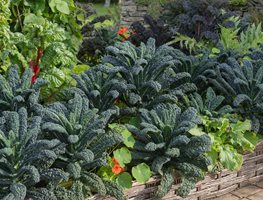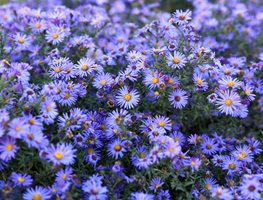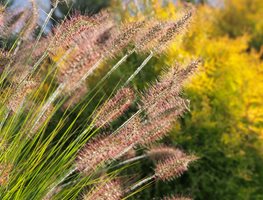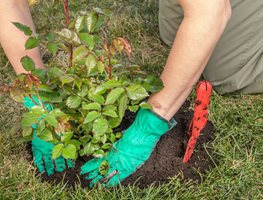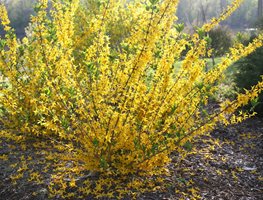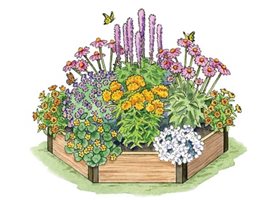10 Gardening Activities for March in the Midwest
Here are a few garden reminders, tips, inspiring ideas, and maintenance suggestions for your garden this month.
1. Sow or Transplant Cool-Season Crops
If you started your cool-season crops back in February, then you can transplant them from March through April if the threat of frost has passed. If you live in a colder region, then you still have time to sow seeds. If you start your seeds in March, your plants will be ready to transplant by April or early May. You won’t start seeds for warm-season crops until April.
2. Prepare Tools for the Season
If you didn’t have a chance to repair your tools or give them a thorough cleaning in late fall or winter, do so now. Use a wire brush or steel wool along with 3-In-One Multi-Purpose Oil to clean metal tools such as shovels, trowels, and spades. Wood-handled tools should be sanded and oiled (use linseed oil). Shears, pruners, and loppers should be cleaned to remove any rust, disinfected with rubbing alcohol (to prevent the spread of plant diseases), and sharpened.
Learn more about how to care for your garden tools.
3. Attend a Flower & Garden Show
The largest flower and garden show in the Midwest is the Chicago Flower & Garden Show, but there are other shows throughout the region that will provide ample ideas, inspiration, and great deals on garden supplies. Check out these other flower and garden events: Indiana Flower & Patio Show; Iowa Flower, Lawn & Garden Show.
4. Divide Perennials
It can feel harsh to dig up a large clump of plants you’ve grown for many years. But the process of digging up and dividing perennials will help them thrive in the long run. Overcrowded perennials often won’t bloom as profusely and may develop diseases. As a general rule, spring is the time to divide perennials that bloom after mid-June. It’s best to wait until your average last frost date has passed (though many perennials can take cold weather). This gives the plants enough time to recover before their bloom season begins. Divide plants on overcast days to keep them from drying out. Dig up the entire clump with as much of the roots intact as possible. Divide the clump into sections using a shovel, spade, or soil knife. Replant divisions around the garden bed or move them to another area. Be sure to amend soil when replanting, and water well. Learn more about growing perennials.
5. Cut Back Ornamental Grasses
Late-winter and early spring are good times to cut back ornamental grasses because they will begin their growing season soon. This means your grasses won’t look bare for long—they’ll resume their growth within weeks. Nearly all types of ornamental grasses can be cut back this time of year, but it’s especially helpful to rejuvenate summer- and fall-blooming grasses such as miscanthus, fountain grass, feather reed grass, and others. Evergreen grasses such as pampas grass, mondo grass, blue fescue, giant feather grass, and rushes don’t need to be cut back. If you want to divide large clumps of grass, this is also the time to do so.
Don't miss what to do in the garden each month, make sure you're getting our weekly newsletter.
6. Plant Roses or Remove Winter Protection
As soon as you see new growth on roses, remove winter protection and begin your regular routine of monthly fertilization. This is also a good time to add to your rose collection because roses will have plenty of time to get established before the next winter. Roses can be planted in early spring in bare-root form (if still available) or from containers. Landscape roses, such as Oso Easy can bring vibrant color to your garden, are easy to grow, disease resistant, and often form large low-growing clumps. When planting roses make sure you select a location with at least 6 hours of direct sun (east-facing exposures are often best for direct morning sun), good air circulation, and neutral to slightly acidic soil.
7. Plant Annuals for Early Color
The quickest way to fill your garden with blooms in the spring is by planting cool-season annuals. Often flooding into local nurseries in late-winter and early spring are a wide selection for pots, planters, and hanging baskets. You can also order them online from suppliers such as Proven Winners. Great plants for early season color include calendula, pansy, petunia, osteospermum, nemesia, lobelia, lobularia, and argyranthemum. You aren’t limited to flowers, either. Plants such as Swiss chard, dusty miller, ornamental cabbage, and kale make colorful additions to container gardens.
8. Prepare for Weeds
Prepare now for weeds such as crabgrass and nutsedge that can be quite a nuisance in spring. Apply a pre-emergent in early spring in order to prevent weeds from germinating. For broadleaf weeds or those that are already growing, use a safe weed killer such as Weed Slayer Organic Herbicide or Bonide BurnOut on the actual plant or hand dig the weeds. For larger weeds in garden beds it’s often best to hand dig the weeds with a soil knife. Try to remove weeds before they go to seed so the seeds aren’t reintroduced to your garden.
Learn more about how to get rid of weeds safely.
9. Don’t Prune Spring-Flowering Shrubs
If you have spring-flowering shrubs such as forsythia, quince, lilac, azaleas, or others, don’t prune them. Pruning in late winter and early spring can cut off flower buds. The best time to prune spring-flowering shrubs is right after they bloom. Most of these shrubs bloom on old wood so if you want to prune you can remove 1/3 to 2/3 of the plant right after flowering. Then, let the plant recover and grow to form next year’s branches and flowers. Read more about pruning flowering shrubs or growing flowering shrubs.
10. Plant for Butterflies
Butterflies such as monarchs need host plants as well as nectar for survival. Consider planning a butterfly waystation in your backyard or front yard. Check out this butterfly garden plan from Gardener's Supply Company. Many of these plants can be bought online through Proven Winners or at your local nursery.
If you enjoyed this information, sign up for our weekly newsletter. Each week, you'll get Garden Design's best delivered right to your inbox including design tips, plant picks, great gardens, outdoor living products, and events to enjoy — along with monthly gardening checklists just for your area.
Do you know someone who would enjoy this Midwest Region gardening information? Why not share it with them?
When you purchase products through links on our site, we may receive an affiliate commission. Thank you for your support.
